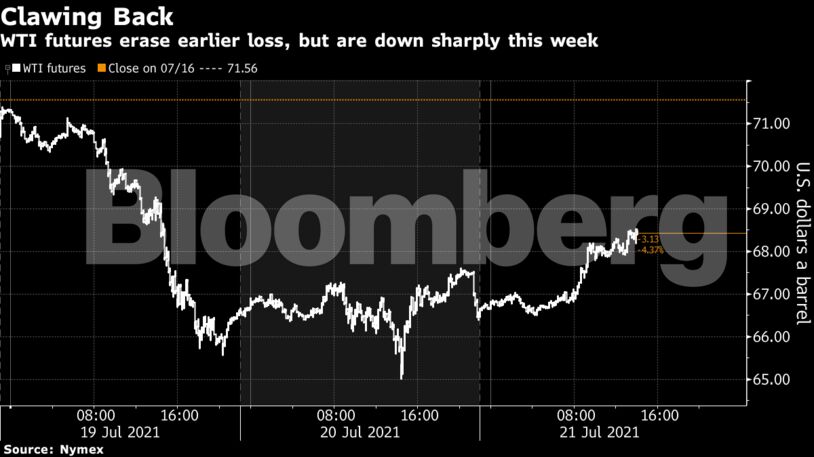
“Risk-on is the main driver,” said Giovanni Staunovo, an analyst at UBS Group AG in Zurich. “I still believe oil fundamentals themselves are supportive, but the last 72 hours were primarily driven by shifts in investors’ attitude to risk.”
There are signs that investor money is beginning to flow back into the crude market. The U.S. Oil Fund ETF, or USO, saw its biggest inflow since May this week. Other crude exchange-traded products have also received new money.
Futures dipped earlier Wednesday after the American Petroleum Institute was said to report an 806,000-barrel gain in U.S. crude inventories. If confirmed by government data, that would be the first weekly increase since May. But the API also reported a large decline at the key pricing point of Cushing, Oklahoma.
| Prices: |
|---|
|
The API also reported a 3.31 million-barrel weekly build in gasoline inventories, even as a Bloomberg survey predicted a draw of more than 1 million barrels. Meanwhile, demand for the motor fuel in the U.S. rose 2.2% last week after two weeks of declines, according to Descartes Labs.
| Related coverage: |
|---|
|
Share This:




 CDN NEWS |
CDN NEWS |  US NEWS
US NEWS 



























